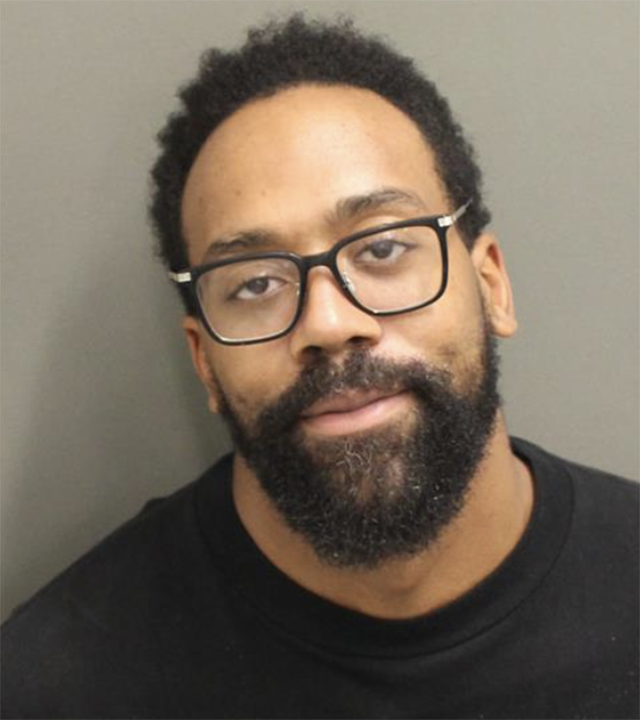As the Los Angeles Fire Department and California State Parks face increasing scrutiny over their handling of a small wildfire that reignited in the deadly Palisades Fire, a newly released document details the agencies' agreement to restrict how fires were fought and cleaned up in some parts of Topanga State Park.
The Wildfire Management Plan for Topanga State Park, a local operating agreement between the Angeles District of California State Parks, the Los Angeles Fire Department and other state and local firefighting agencies, outlines concerns about “sensitive” plants, animal species and tribal sites. It states that “when possible a modified mop should be used for ground fuels” and “shoveling should be minimized and restricted to hot areas near fire lines.”
The document was delivered this week by the state to attorneys representing victims of the Palisades fire. It lays out some basic guidelines and restrictions, which fire experts say are fairly standard in agreements between land managers and fire agencies. But it remains unclear whether those procedures in any way prevented firefighters from completely extinguishing the Lachman fire.
In a move that could yield answers, Los Angeles County Superior Court Judge Samantha P. Jessner signaled Tuesday that she would sign an order as soon as next week for depositions from 12 Los Angeles firefighters and up to five State Parks representatives.
When firefighters and state employees take depositions, attorneys will likely ask them about their personal observations in response to the Lachman fire, how the two agencies coordinated and whether the Fire Department agreed to any tactical restrictions.
The agreement says firefighters should “cold-leave charred logs near the fire line with minimal tool scars” and “consider allowing large logs to burn.” In ecologically sensitive parts of the park, called “areas to avoid,” a “natural resource advisor should be consulted during wildfire suppression planning and response.” But it also notes that “the final decision to modify firefighting actions” will be based on factors such as “the likelihood of threat to life and/or property” and “the availability of firefighting resources.”
There remains no direct evidence that the state plan changed how the Fire Department fought or extinguished the Lachman Fire. The department has not answered questions about whether state officials interfered, and the state has refused to release maps indicating whether Lachman's burn scar included areas to avoid. Jessner said his order would direct the state to turn over maps of areas to avoid.
The Fire Department has faced a barrage of criticism since federal investigators concluded in October that embers from the Jan. 1 Lachman Fire reignited and sparked the Jan. 7 Palisades firestorm that killed 12 people and destroyed more than 6,800 structures. Last month, The Times reported That firefighters had complained that the ground was still burning, but on January 2 a battalion chief ordered them to pack up their hoses and leave the burned area anyway.
Meanwhile, attorneys working on behalf of Palisades fire victims have alleged The state failed to monitor Lachman's burn scar or make sure the area was safe after firefighters declared the fire contained. Last week, they alleged A state park official who arrived at the scene of the Lachman fire “directly interfered with LAFD cleanup operations” and now presents California's plan for Topanga State Park as vital new evidence that the state imposed restrictions on fire crews.
“This is why the LAFD was prevented from conducting a normal cleanup of the Lachman Fire,” argued Alexander “Trey” Robertson, an attorney for Palisades Fire victims. “Plant Police prevented LAFD from doing their job.”
California State Parks declined to comment, saying the agency does not comment on pending litigation. A state official who asked not to be identified said California State Parks is not actively involved in firefighting nor does it have command and control over firefighting resources, including the Lachman Fire.
“State Parks resource advisors support the primary firefighting agency during an incident, always prioritizing the protection of human life, and, when safe and feasible to do so, provide guidance to avoid impacts to cultural and natural resource sites,” the official said. “To be clear: We do not direct or interfere with any firefighting or cleanup activities, and any statement to the contrary is categorically false.”
California's plan for Topanga State Park aims to provide a framework to “guide wildfire suppression techniques” in a way that protects human life, park infrastructure and sensitive resources. The goal, it says, “is to protect sensitive natural and cultural resources, support healthy, fire-resilient ecosystems, reduce risk to public safety, and build effective communication between state parks and response agencies.”
Chaparral ecosystems, including the shrubby plants and oaks that cover the Santa Monica Mountains, have historically experienced fires every 30 to 130 years, primarily due to lightning strikes. Most chaparral plants are adapted to this fire cycle. For example, some seeds in soil depend on thermal shock or smoke to germinate. Other chaparral plants do not depend on fire, but simply tolerate it.
The wildfire management plan between the state and fire agencies states that Topanga State Park had not experienced fires in more than 50 years. “To restore natural fire frequency and chaparral habitats,” he says, “Topanga State Park must be allowed to burn within reasonable limits of public safety and outside fire exclusion zones.”
But Alexandra Syphard, a fire ecologist at the Conservation Biology Institute, noted that 50 years is still relatively early in the chaparral fire cycle. Because chaparral does not pose a noticeably increased fire risk as it ages, letting the park burn would not achieve any significant ecological or wildfire risk reduction goals, he said.
Fire experts say such wildfire management agreements, with limitations on cleanup and suppression, are standard nationally in the fire service for areas where a local, state or federal agency contracts with a fire department from a different level of government for suppression services.
“The requirements are typical of what I've seen,” said Shane Lauderdale, a retired Northern California fire chief who helped manage incident operations on the Thomas, Camp, Kincade and Butte Complex fires.
Documents released by the National Wildfire Coordinating Group, a federal interagency group that sets wildfire operations standards, also indicate that restrictions outlined in Topanga's wildfire plan for natural and cultural resource areas, such as limiting the use of heavy equipment and fire retardants during fire suppression and reducing the use of shoveling and cutting burning logs during cleanup operations, are typical.
These strategies “are expected as part of the conditions of participation on park lands, whether federal or state,” Lauderdale said. “We are required to engage a resource advisor whenever practical” to address land managers’ “particular suppression and cleanup conditions.”
Paul Claeyssens, a retired U.S. Forest Service archaeologist who spent more than 30 years serving as a wildfire resource advisor, said that while policies to protect natural and cultural resources can vary significantly across federal, state and regional forest lands, the practices outlined by the National Wildfire Coordinating Group are a “standard part of the toolkit” for land managers, fire officials and resource advisors.
The idea that a resource advisor could significantly inhibit a firefighting or cleanup operation “is a false premise,” he said, “in the sense that resource advisors are just that: They're advisors. They don't make decisions, they don't lead teams, they don't tell people what to do.”
Fire experts point out that even if the state restricted cleanup in some way, firefighters didn't have to leave; They could have patrolled the area longer, used thermal imaging technology, and left the hoses outside.
A former Los Angeles fire chief who asked not to be identified so he could speak candidly said firefighters had other options for cleanup. They could have cut lines and excavated around sensitive areas.
“It would be hard for me to believe that the state would say, 'No, they're not doing any reform, just let it sit,'” the former chief said. “Other alternatives could have been taken.”
“It can still be reformed… Maybe it can be investigated,” he added. “But it can't be cut down.”
The Los Angeles Fire Department said in a statement that “while the LAFD is committed to transparency, these fires are part of an active federal investigation. As a result, we are unable to provide additional details at this time. This ensures that the process remains fair, thorough, and does not interfere with any future court proceedings.”












